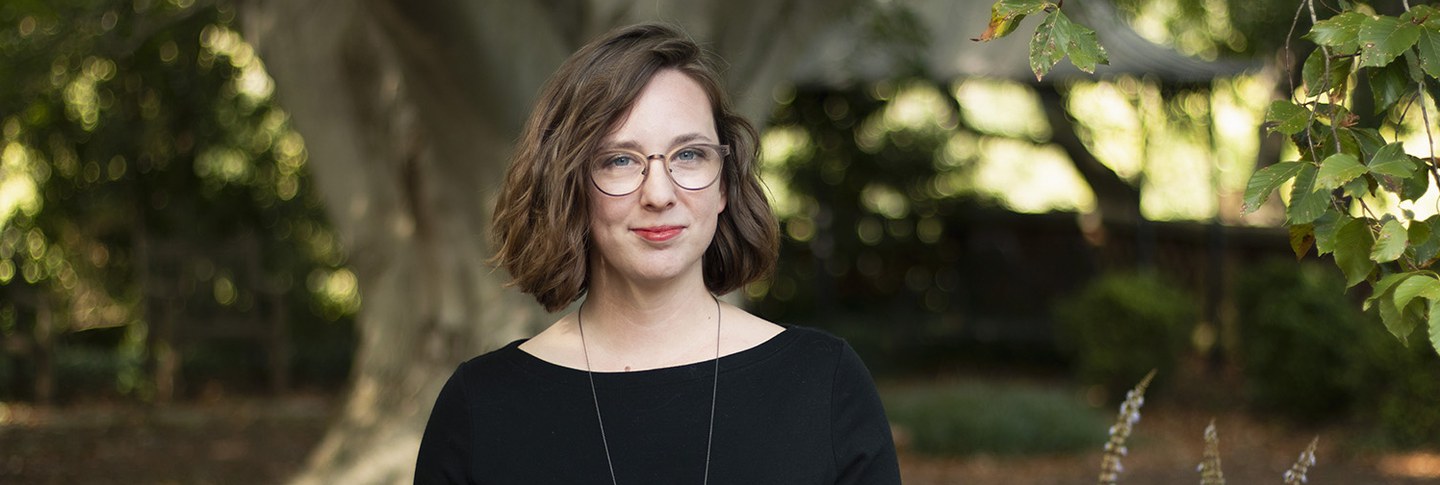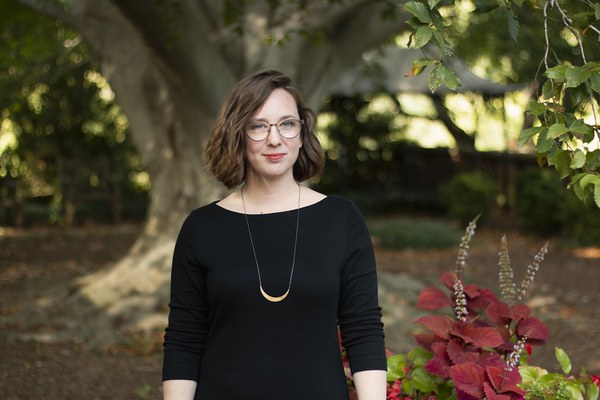Sarah F. Porter, a PhD candidate in religion at Harvard University, is a Tyler fellow in Byzantine Studies. Her research report, “Early Christian Deathscapes,” examined how the martyria and cemeteries of fourth-century Antioch interacted with each other and the Antiochenes.
Q&A with Sarah F. Porter
Why do you think it’s important to consider affect theory in ancient studies?
Historians are often skeptical of the ability to trace emotion in the record, because throughout the twentieth century, emotions have been considered a private psychological state or mood. Instead, affect theory argues that an emotion is a social and cultural practice. This is good news for the historian, whose job is to trace and explain social and cultural practices. Space and architecture are realms where affect is mobilized and practiced. I use the term deathscape, first deployed by cultural geographers in the late 1990s, to demarcate these overlapping interactions of discourse, affect, and space, specifically in places marked by death.
Why were dead bodies a live issue in late antique Antioch?
Dead bodies are always a live issue no matter what historical period you’re studying! In late antiquity, Christianity went from being a new religious movement on the ground to being more established. The older it got, the more dead bodies it had to reckon with.
For three years, Christians dealt with this emperor Julian whom they called “Apostate.” He launched a project of “making the empire great again”—trying to get the empire back to an “original” traditional pagan religion that never existed as purely as Julian claimed. Christians in late antiquity seized on Julian as this devilish figure in their recent past. Julian was raised Christian and then turned his back on the religion entirely, so he became a flashpoint as Christians thought about and defined their own identities in opposition to their detractors. But indeed many Antiochenes—even ones who weren’t Christian—disliked Julian. They would have preferred to eat the cattle he was sacrificing.
One of Julian’s claims was that dead bodies are gross—they’re pollutants. This was important to him because dead bodies—Jesus’s dead and resurrected body, but also the miraculous bodies of saints—were essential parts of the Christian tradition by the end of the fourth century, and Julian wanted to reject that. Julian embarked on a campaign to move the body of Babylas, a saint, out of his shrine near Apollo’s oracle at Daphne and back to the cemetery whence he came.
The story goes that when Julian consulted the oracle of Apollo at Daphne, the god said, “I can’t give you any advice, because your uncle moved the body of Babylas from the cemetery—where he should be—to here, where I am. Move Babylas; then I’ll give you some advice.” Julian moved Babylas, and shortly afterward the temple of Apollo caught fire and burned down, even the very special cult statue of Apollo. The way Christians mythologized Julian, his “exile” of Babylas, and other contests over dead bodies is to insist Apollo’s fear of Babylas’s body proves how powerful and terrifying a saint’s body can be.
What’s an example of how looking at space helps to better understand a late antique text?
The texts I use were spoken in public: homilies or sermons, like John Chrysostom’s encomium on Meletius, a bishop of Antioch. Meletius was a contested figure while he was alive and in exile most of the time he was bishop. Like Julian, he moved Babylas’s body to bolster his own authority—from the cemetery to a gigantic church that he put considerable effort and resources into building. Meletius was buried quite near Babylas at the center of the church; Chrysostom called him Babylas’s “tentmate.” We are lucky a good candidate for this structure has been excavated—a cruciform church on the outskirts of Antioch paved in rich mosaics. We can begin to ask what it felt like to hear this encomium in this space.
Chrysostom called Meletius a “love charm,” conjuring an affective pull between the congregation and this highly contested dead figure. He did this in a space that seems designed to have protective and enchanting effects on those who gather there. With my project, I’m asking how reading a funeral oration in place enriches our understanding of what those people were experiencing when they stood there listening. This requires working with both ancient texts and archaeological archives from the Princeton excavations of Antioch in the 1930s.
I did all my writing at Dumbarton Oaks at one table in the library. It sits underneath a mosaic from the very church I’m writing about, the church of Babylas. As I wrote about the legacy of that church, and how its mosaic floors literally supported the community who gathered there, I glanced up at the very dedicatory inscription they stood on. These Antiochenes and their strategies are still working on me more than fifteen hundred years later. They’re still trying to persuade me of their authority and their validity as the rightful Christians of late antique Antioch.
Interviewed and edited by Postgraduate Writing and Reporting Fellows Julia Ostmann (2018–2020) and May Wang. Photo by Elizabeth Muñoz Huber, 2018–2020 postgraduate digital media fellow.

